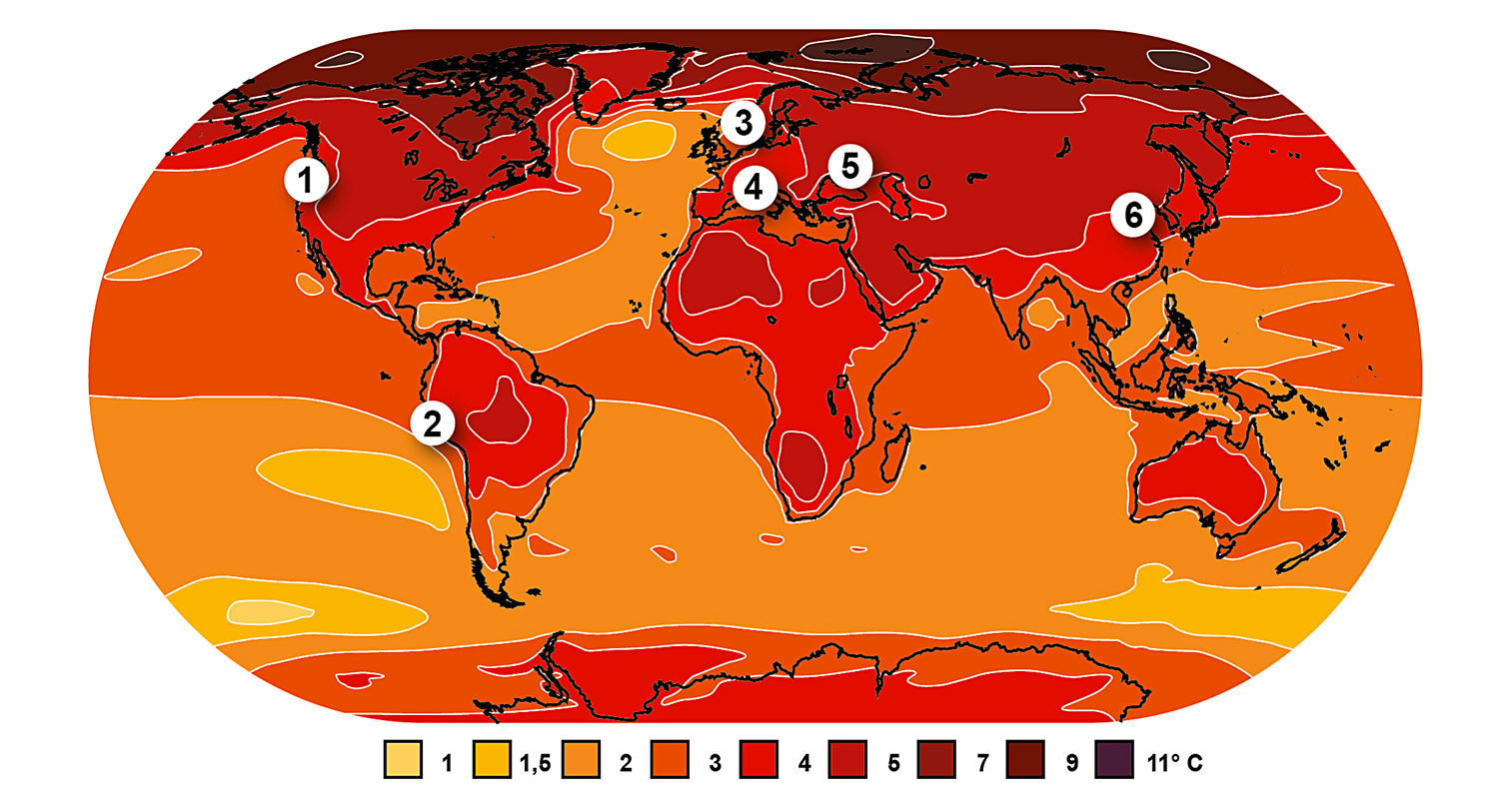
Pacific Coast of Canada. This productive ecosystem has diverse ecological features including upwelling, kelp forests, and rocky reefs. Its dynamics are influenced by several regional- and large-scale factors including freshwater runoffs, Pacific Decadal Oscillation and El Niño Southern Oscillation, supporting hundreds of species. A few dozen species are commercially exploited with active fisheries management regulations including minimum mesh size and total allowable catch with individual transferable quotas, allowing fishing at moderate levels.
Northern Humboldt Current system. One of the 4 eastern boundary upwelling systems (EBUS). Despite similar trophic structure, the Humboldt provides 8- to 10-times higher fisheries yields than the other EBUS, containing the single, largest fishery world-wide (Peruvian anchovy). Anchovy displays high plasticity and potential differential responses of geographically distinct stocks to climate change. The ecosystem is prone to high interannual variability due to El Niño events and, hence, adaptive management of artisanal and industrial fisheries has proven important.
North Sea. This marine epicontinental shelf ecosystem is characterized by southern well-mixed shallow waters and deeper, northern seasonally stratified areas. It underwent 2 climate-induced regime shifts at the end of the 80’s and 90’s. Intense historical exploitation has triggered changes in the life-history traits of commercial fish such as gadoids, plaice and sole. Fisheries in the area are mainly managed by fishing quotas using the maximum sustainable yield (MSY) target reference point.
English Channel. This shallow epicontinental sea is influenced by the Atlantic Ocean to the west and is connected to the North Sea through the Dover Strait (eastern limits), the narrow bottle-neck between France and the UK. The megafauna is rich, in terms of both quantities and diversity (pelagic, flatfish, gadoids, skates, catsharks, crustaceans and cephalopods) and is supported by a high benthic abundance acting as a food source for many fish species. Many of the fish stocks are either fully or over-exploited, which makes commercial fisheries sensitive to fluctuations in recruitment of young individuals to the stock.
Gulf of Lions (Mediterranean Sea). This productive ecosystem due to nutrient inputs by the Rhone River represents an important feeding ground for a large diversity of marine organisms and is characterized by overexploitation of most target species. Strong changes have been observed in pelagic fish abundance possibly related to climate change with consequences for fleet dynamics. Fisheries in the areas are mainly managed by effort control and management plans regarding particular gears.
Black Sea. It is the largest meromictic marine system in the world, which is characterized by anoxic waters below 200-meter depth. Its ecosystem has experienced catastrophic transformations because of eutrophication, alternating trophic interactions due to introduction of alien species, and intensive fisheries exploitation since 1950s. However, no regional common fisheries management is in place and current policies for living resources protection in the Black Sea are far from ideal.
Yellow Sea. This semi-enclosed ecosystem is characterized by shallow waters (60-80 m) with a wide variety of habitats and a high level of marine biodiversity. It has been heavily exploited since the 1950s resulting in overexploitation of most commercial species. The primary management measure is a summer moratorium that has been implemented since 1995 aiming at protecting spawning stocks. However, the current moratorium system lacks specificity to sufficiently cover the spawning seasons of different species.


